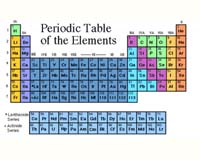| . |  |
. |
Kingston RI (SPX) Dec 16, 2010 While there continues to be considerable debate among geologists about the availability of oxygen in the Earth's mantle, recent discoveries by a University of Rhode Island scientist are bringing resolution to the question. Analysis of erupted rock from Agrigan volcano in the western Pacific near Guam found it to be highly oxidized as a result of its exposure to oxygen when it formed in the Earth's mantle. When, over millions of years, seafloor rocks are transported back into the Earth's mantle at subduction zones - sites on the seafloor where tectonic plates have collided, forcing one plate beneath the other - they deliver more oxygen into the mantle. The results of the research was presented at a meeting of the American Geophysical Union in San Francisco. "The cycling of oxygen at the Earth's surface is central to the life and activity that takes place at the surface, but it is equally essential in the Earth's mantle," said URI Assistant Professor Katherine Kelley. "The availability of oxygen to the mantle is in part controlled by the oxygen at the surface." Kelley said that this discovery is important because the availability of oxygen to the mantle controls what minerals are found there, how certain elements behave, and what kind of gasses might be expelled from volcanoes. "The most primitive samples of lava we can identify are the most oxidized," she said. "That oxidation comes off the subducted plate at depth in the mantle and makes its way into volcanic magma sources that then erupt." According to Kelley, some scientists have argued that the availability of oxygen to the mantle hasn't changed since the Earth was formed. However, if plate tectonics carry this oxidized material into the mantle, as she has demonstrated, then it is adding oxygen to the mantle. It also suggests that what takes place at the surface of the Earth probably influences what happens deep beneath the surface as well. At Brookhaven National Laboratory, Kelley analyzed tiny olivine crystals that contain naturally formed glass from the early histories of magmas, in which are found dissolved gases from volcanic eruptions. By analyzing the glass she determined the oxidation state of iron in rocks and related it to the dissolved gases, which are elevated in subduction zone magmas. This work follows a related study by Kelley that found that material from subduction zones are more oxidized than material from mid-ocean ridges where the plates are pulling apart. That study was published in the journal Science in 2009. "These are important processes to understand, but they are hard to get a clear picture of because they take place over such long periods of time," Kelley said. "It's one piece of the big puzzle of Earth's evolution and how it continues to change."
Share This Article With Planet Earth
Related Links University of Rhode Island Dirt, rocks and all the stuff we stand on firmly
 10 Elements On Periodic Table About To Make An Historic Change
10 Elements On Periodic Table About To Make An Historic ChangeCalgary, Canada (SPX) Dec 16, 2010 For the first time in history, a change will be made to the atomic weights of some elements listed on the Periodic table of the chemical elements posted on walls of chemistry classrooms and on the inside covers of chemistry textbooks worldwide. The new table, outlined in a report released this month, will express atomic weights of 10 elements - hydrogen, lithium, boron, carbon, nitrogen, o ... read more |
|
| The content herein, unless otherwise known to be public domain, are Copyright 1995-2010 - SpaceDaily. AFP and UPI Wire Stories are copyright Agence France-Presse and United Press International. ESA Portal Reports are copyright European Space Agency. All NASA sourced material is public domain. Additional copyrights may apply in whole or part to other bona fide parties. Advertising does not imply endorsement,agreement or approval of any opinions, statements or information provided by SpaceDaily on any Web page published or hosted by SpaceDaily. Privacy Statement |